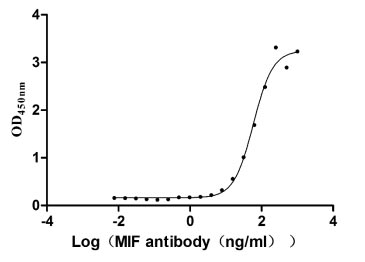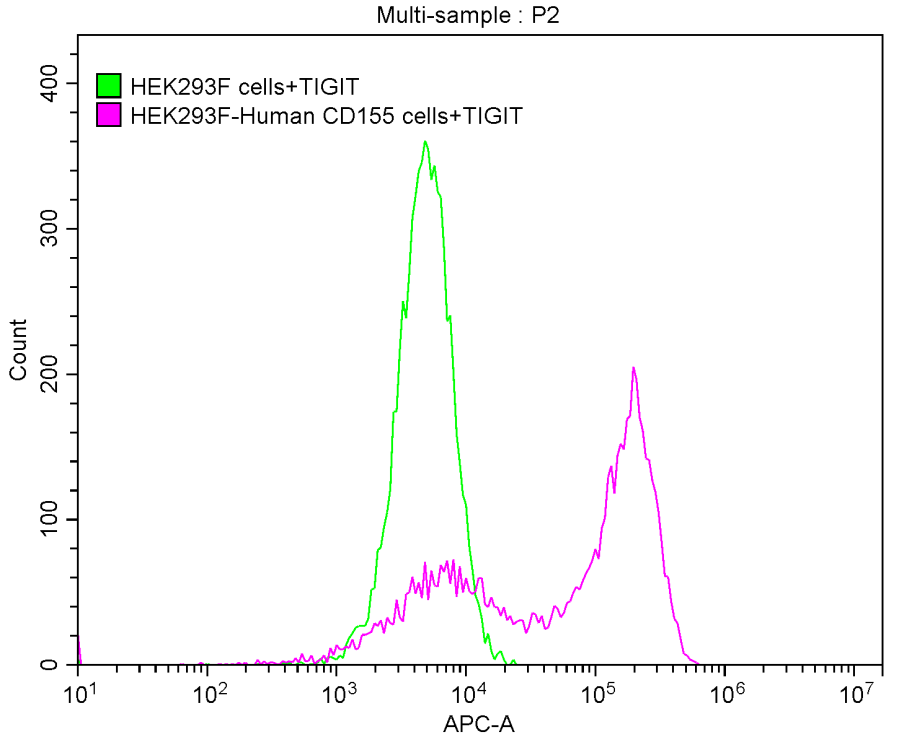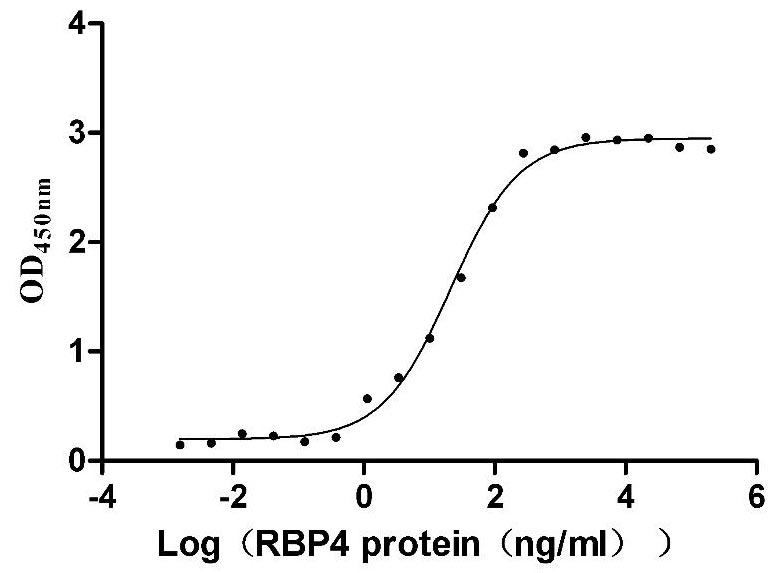Recombinant Human Cell division cycle and apoptosis regulator protein 1 (CCAR1), partial
In Stock-
中文名稱:Recombinant Human Cell division cycle and apoptosis regulator protein 1 (CCAR1), partial
-
貨號(hào):CSB-EP816898HU
-
規(guī)格:¥1836
-
圖片:
-
其他:
產(chǎn)品詳情
-
純度:Greater than 95% as determined by SDS-PAGE.
-
生物活性:Not Test
-
基因名:CCAR1
-
Uniprot No.:
-
別名:Cell cycle and apoptosis regulatory protein 1;CARP-1;Death inducer with SAP domain
-
種屬:Homo sapiens (Human)
-
蛋白長(zhǎng)度:Partial
-
來(lái)源:E.coli
-
分子量:34.3 kDa
-
表達(dá)區(qū)域:1-249aa
-
氨基酸序列MAQFGGQKNPPWATQFTATAVSQPAALGVQQPSLLGASPTIYTQQTALAAAGLTTQTPANYQLTQTAALQQQAAAAAAALQQQYSQPQQALYSVQQQLQQPQQTLLTQPAVALPTSLSLSTPQPTAQITVSYPTPRSSQQQTQPQKQRVFTGVVTKLHDTFGFVDEDVFFQLSAVKGKTPQVGDRVLVEATYNPNMPFKWNAQRIQTLPNQNQSQTQPLLKTPPAVLQPIAPQTTFGVQTQPQPQSLLQ
Note: The complete sequence may include tag sequence, target protein sequence, linker sequence and extra sequence that is translated with the protein sequence for the purpose(s) of secretion, stability, solubility, etc.
If the exact amino acid sequence of this recombinant protein is critical to your application, please explicitly request the full and complete sequence of this protein before ordering. -
蛋白標(biāo)簽:N-terminal 10xHis-tagged and C-terminal Myc-tagged
-
產(chǎn)品提供形式:Liquid or Lyophilized powder
Note: We will preferentially ship the format that we have in stock, however, if you have any special requirement for the format, please remark your requirement when placing the order, we will prepare according to your demand. -
緩沖液:If the delivery form is liquid, the default storage buffer is Tris/PBS-based buffer, 5%-50% glycerol. If the delivery form is lyophilized powder, the buffer before lyophilization is Tris/PBS-based buffer, 6% Trehalose.
-
復(fù)溶:We recommend that this vial be briefly centrifuged prior to opening to bring the contents to the bottom. Please reconstitute protein in deionized sterile water to a concentration of 0.1-1.0 mg/mL.We recommend to add 5-50% of glycerol (final concentration) and aliquot for long-term storage at -20℃/-80℃. Our default final concentration of glycerol is 50%. Customers could use it as reference.
-
儲(chǔ)存條件:Store at -20°C/-80°C upon receipt, aliquoting is necessary for mutiple use. Avoid repeated freeze-thaw cycles.
-
保質(zhì)期:The shelf life is related to many factors, storage state, buffer ingredients, storage temperature and the stability of the protein itself.
Generally, the shelf life of liquid form is 6 months at -20°C/-80°C. The shelf life of lyophilized form is 12 months at -20°C/-80°C. -
貨期:3-7 business days
-
注意事項(xiàng):Repeated freezing and thawing is not recommended. Store working aliquots at 4℃ for up to one week.
-
Datasheet & COA:Please contact us to get it.
相關(guān)產(chǎn)品
靶點(diǎn)詳情
-
功能:Associates with components of the Mediator and p160 coactivator complexes that play a role as intermediaries transducing regulatory signals from upstream transcriptional activator proteins to basal transcription machinery at the core promoter. Recruited to endogenous nuclear receptor target genes in response to the appropriate hormone. Also functions as a p53 coactivator. May thus play an important role in transcriptional regulation. May be involved in apoptosis signaling in the presence of the reinoid CD437. Apoptosis induction involves sequestration of 14-3-3 protein(s) and mediated altered expression of multiple cell cycle regulatory genes including MYC, CCNB1 and CDKN1A. Plays a role in cell cycle progression and/or cell proliferation. In association with CALCOCO1 enhances GATA1- and MED1-mediated transcriptional activation from the gamma-globin promoter during erythroid differentiation of K562 erythroleukemia cells. Can act as a both a coactivator and corepressor of AR-mediated transcription. Contributes to chromatin looping and AR transcription complex assembly by stabilizing AR-GATA2 association on chromatin and facilitating MED1 and RNA polymerase II recruitment to AR-binding sites. May play an important role in the growth and tumorigenesis of prostate cancer cells.
-
基因功能參考文獻(xiàn):
- High CCAR1 expression tended to be an independent predictor of shorter recurrence-free survival in hepatocellular carcinoma patients after curative hepatectomy. PMID: 26511806
- Our data demonstrates that CCAR1 contributes to carcinogenesis in gastric cancer and is required for the survival of gastric cancer cells. Moreover, CCAR1 may serve as a diagnostic marker and a potential therapeutic target. PMID: 28230774
- this study provides insight into the structure and evolution of DBC1 and CCAR1, which may impact future studies on the biological functions of these proteins. PMID: 25610865
- necdin exerts its pro-survival activity by counteracting the action of the pro-apoptotic protein Cell Cycle Apoptosis Regulatory Protein (CCAR1/CARP1) PMID: 22905258
- CCAR1 is a novel partner of Ngn3 in mediating endocrine differentiation. PMID: 22266316
- anaphase-promoting complex (APC)-2-cell cycle and apoptosis regulatory protein (CARP)-1 interaction antagonists are novel regulators of cell growth and apoptosis PMID: 21903591
- cell cycle and apoptosis regulatory protein-1 is a novel mediator of apoptosis signaling by retinoid CD437 PMID: 12816952
- The study shows that tyrosine 192 of CARP-1 is a target of apoptosis signaling, and CARP-1, in turn, promotes apoptosis by activating p38 MAPK and caspase-9. PMID: 16543231
- CARP-1 is a suppressor of breast cancer growth, and its expression is diminished in tumors, in part, by methylation-dependent silencing PMID: 17513614
- Damaging exercise induced the expression of capZalpha, MCIP1, CARP1, DNAJB2, c-myc, and junD, each of which are likely involved in skeletal muscle growth, remodeling, and stress management. PMID: 18321953
- CCAR1 regulates expression of key proliferation-inducing genes. PMID: 18722177
- These results provide the first evidence for the microtubule dependent association of AKAP350A and CCAR1 with RNA stress granules. PMID: 19073175
- CCAR1 is a novel component of Wnt/beta-catenin signaling that plays an important role in transcriptional regulation by beta-catenin. PMID: 19520846
顯示更多
收起更多
-
亞細(xì)胞定位:Cytoplasm, perinuclear region.
-
組織特異性:Expressed in various epithelial cancer cell lines, including breast, colon, prostate, pancreatic and leukemia. Expression is regulated by growth factors.
-
數(shù)據(jù)庫(kù)鏈接:
Most popular with customers
-
Recombinant Human Macrophage migration inhibitory factor (MIF) (Active)
Express system: Mammalian cell
Species: Homo sapiens (Human)
-
Recombinant Human T-cell immunoreceptor with Ig and ITIM domains (TIGIT), partial (Active)
Express system: Mammalian cell
Species: Homo sapiens (Human)
-
Recombinant Human Neuropilin-1 (NRP1) (Active)
Express system: Mammalian cell
Species: Homo sapiens (Human)
-
Recombinant Human HLA class II histocompatibility antigen gamma chain (CD74), partial (Active)
Express system: Mammalian cell
Species: Homo sapiens (Human)
-
Recombinant Human Intestinal-type alkaline phosphatase (ALPI) (Active)
Express system: Mammalian cell
Species: Homo sapiens (Human)
-
Recombinant Mouse Transthyretin (Ttr) (Active)
Express system: Mammalian cell
Species: Mus musculus (Mouse)
-
Recombinant Human V-set and immunoglobulin domain-containing protein 4 (VSIG4), partial (Active)
Express system: Mammalian cell
Species: Homo sapiens (Human)
-
Recombinant Human Carcinoembryonic antigen-related cell adhesion molecule 8(CEACAM8) (Active)
Express system: Mammalian cell
Species: Homo sapiens (Human)






-AC1.jpg)













